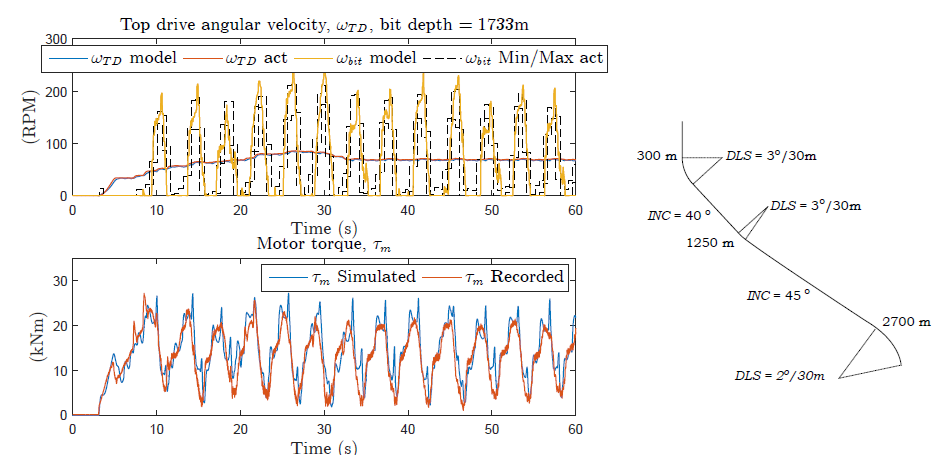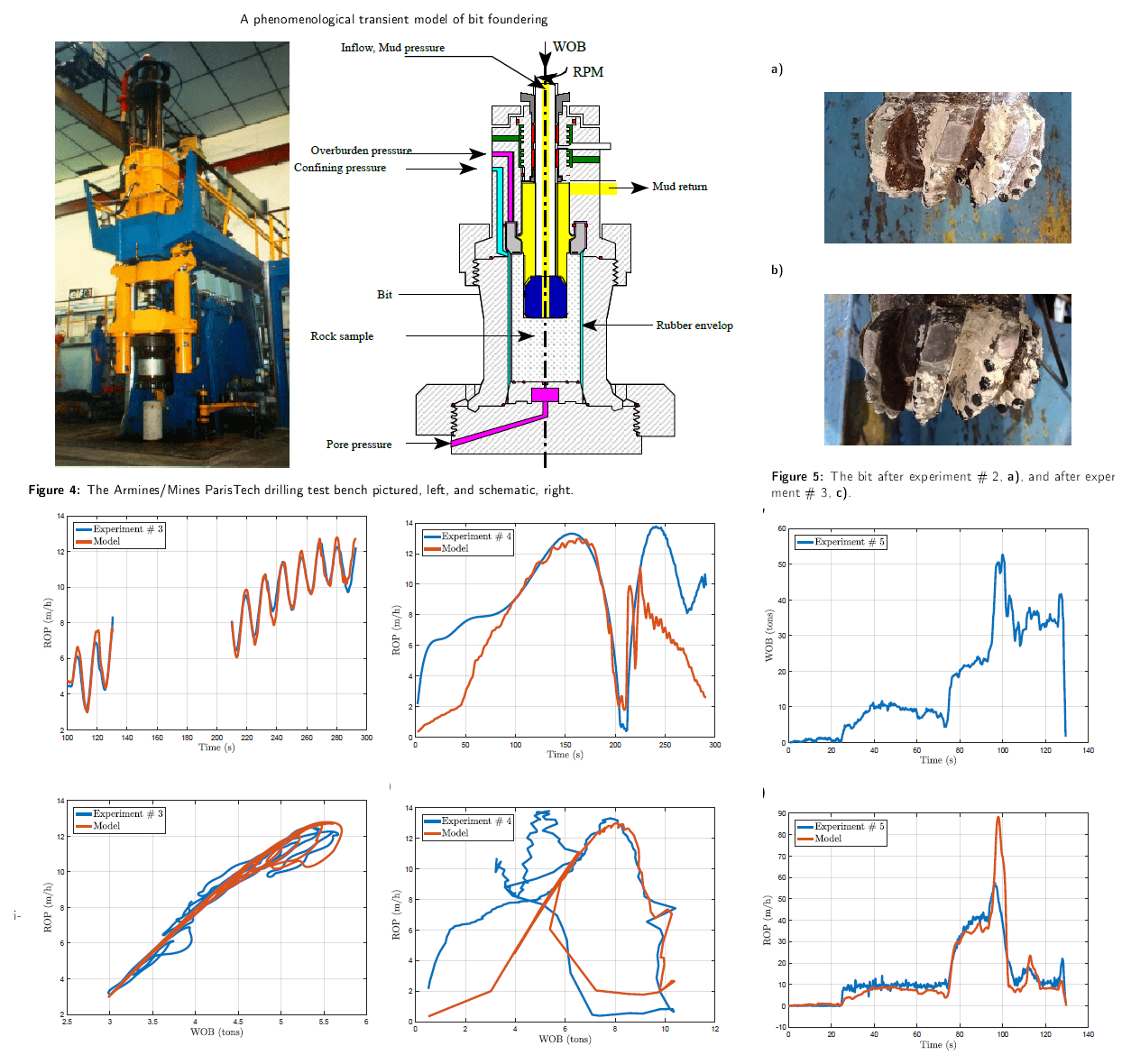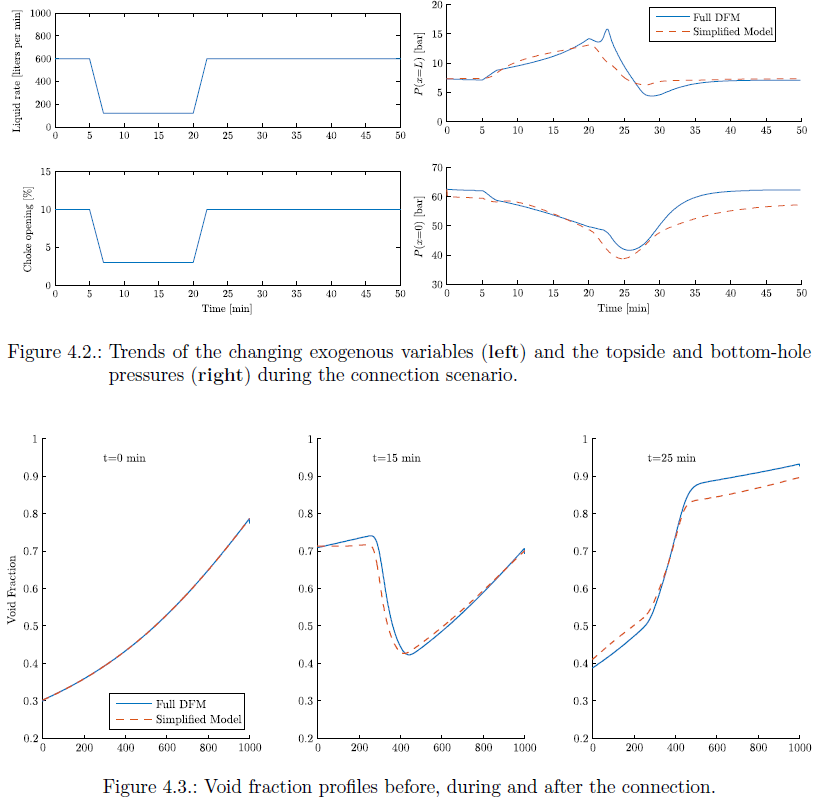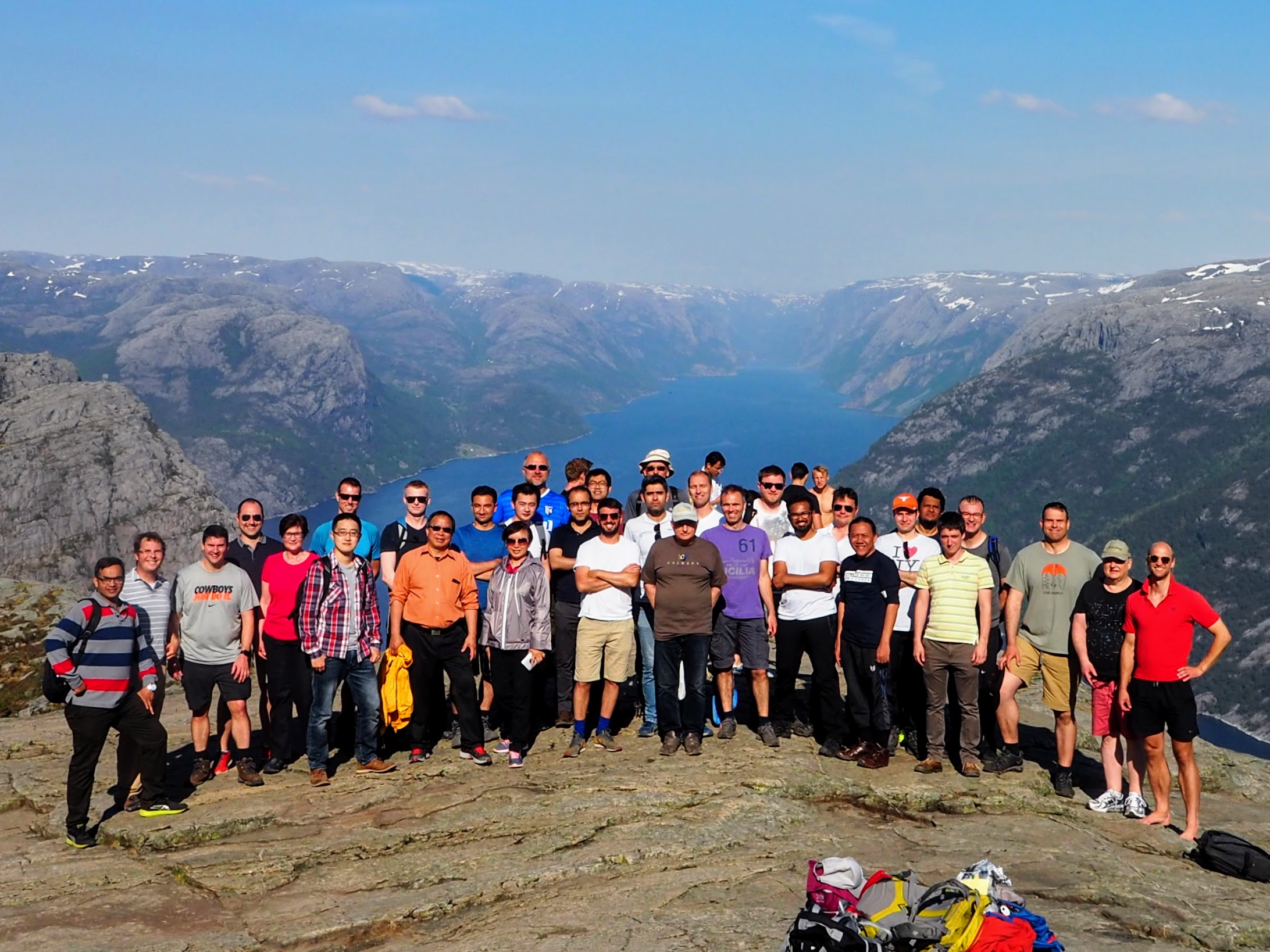

My views on stick slip vibrations are mostly summarized in this presentation that I held at the University of Minnesota in 2019.
Stick slip is most likely cause by side forces, and is thereby most severe in long lateral wells. I did some modelling of this in a collaboration with Roman Shor [J10]. The code is available here. I strongly believe that this torsional PDE model is the simplest representation that gives a reasonable fidelity to what's seen in the field. We also got some very good results when comparing with field data (see figure above).
We later expanded the modelling work to control [C16, J14, J19] and estimation [J17], summarized in this SoCal Workshop presentation.
Stick slip can also be caused by the regenerative effect in the cutting mechanism, which I investigated with Nathan van de Wouw [J11, J15]. The local linearized analysis shows both an axial and a torsional feedback loop, which can lead to both axial and torsional vibrations. Interestingly, the axial vibrations tend to both dampen the torsional vibrations and yield higher drilling efficiency, which can potentially explain drilling improvements with downhole tools [C25].

Drilling rate of penetration has a local maximum with respect to weight on bit (WOB) due to the foundering effect. The optimal WOB is dependent on slowly varying drilling conditions which makes it a good candidate for extremum seeking control (ESC). See ACC presentation slides, (also [C19] in publications).
Interestingly, we ran into to some issues when testing this approach in the lab as we found that the foundering effect from bit balling has a time constant that must be accomodated. At least we ended up with a nice phenomenological model of bit foundering as a result, see [J21].

My thesis was on pressure control of two-phase flow, with the application focus on drilling, but I think it is probably more relevant for production. I think the most interesting part of this work is the simplified two-phase flow models [J6, J7] that are very amenable for controller and estimator design. The quickest intro might be to just look at the slides from the thesis defense.
I did a webinar on my thesis which is available here.

In 2018 I organized 4th International Colloquium on Nonlinear Dynamics and Control of Deep Drilling Systems together with Emmanuel Detournay and Nathan van de Wouw. It included taking 35 leading drilling researchers on a hike to Prekestolen, which was a lot fun. The proceedings can be found here.